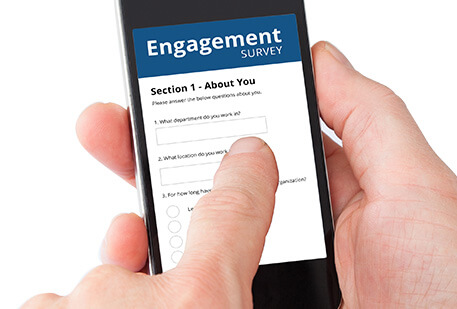LinkedIn essentials for your job search
In my time working in social media for the HR industry, I have had the fortunate opportunity to gain valuable insights to the ways recruiters source AND learn about how social recruitment tools work. On the flipside of the spectrum, I have also had the chance to learn from job seekers and the challenges they face in finding work. What I have found in my conversations with job seekers is that one of the most common mistakes that they make is not having a 100% completed LinkedIn profile.
LinkedIn is a very powerful tool for those in the market for a new job or career and that is why I wanted to do a post on creating a complete LinkedIn profile. Every person who is looking for work should be going into their job search with a complete profile as this helps to:
- Build your professional credibility to recruiters and managers
- Get your profile found by recruiters and managers
- Increase the likelihood of job opportunities coming to you
In this post to I want to provide some tips and resources for getting your profile to the point that it needs to be at in getting you ahead of the pack when it comes to your job search. Let’s start with the basics:
1) Your Basic Information
Photo: Include a professional headshot, people want to see you and are more likely to connect with you if they know what you look like. I have highlighted “Professional” because LinkedIn is a “Professional” networking tool. It is not Facebook; it is not Twitter and it is most certainly not Lavalife; so please keep your vacation photos of you and your significant other to your Facebook page.
What to Avoid:
- Pictures of you on vacation with drinks in your hand
- Pictures of you and your significant other
- Grainy or pixelated images
- Instagram self portraits
- Having no picture
“Experienced Graphic Designer specializing in logo design, web and motion graphics”
“Talented Graphic Designer with experience working with an array of brands”
“Graphic Designer actively looking for new opportunities”
With the last point, you’re probably wondering if it’s okay to state that you are looking for work, please don’t be afraid to do this if you are unemployed. To a recruiter this means you are likely available to start working ASAP, which means the position they are recruiting for will get filled quickly. Whatever headline you choose, always make sure it represents your talent / expertise AND that it relates to the industry that you are looking for work in.
The following are some examples of attention-grabbing headlines that were found on a similar post on creating effective LinkedIn Headlines:
2) Your Summary
Consider this section as the “cover letter” on steroids. This is the chance on your profile that you can really brag about your experience, skills, passions (work-related) and wins. This is also the section on your LinkedIn profile that provides you the opportunity to include as many relevant keywords as you can, which ultimately will help you get found when recruiters are searching for people with your skills and experience.
Try to include the following in your summary:
Your Elevator Pitch: A short paragraph (3-5 sentences) on why you are an awesome Marketer, Sales Professional, IT Consultant, Manager etc. Give a reason for the person looking at your profile to scroll down and read more about your greatness.
A list of your top skills: Try to keep it technical and if you are to use qualitative terms such as “team-player, hard-worker, go-getter”, try not to overdo it. Remember most recruiters start their search based on your technical skills as it relates to the position; the qualitative points are typically a secondary keyword used by recruiters. If you are to add the qualitative terms try to keep these points to the body content in your elevator pitch.
The type of industries you have worked in: Include a brief list or statement of which types of industries you specialize in. Recruiters often search based on industry experience so don’t be afraid to include niche industries as well if you have worked there. Don’t be shy to include company names here as well.
Your Wins: Do you have a project you’re exceptionally proud of? Don’t be afraid to share it (unless you are contractually not able to by your employer at the time). Oftentimes I see points such as “Negotiated multi-million dollar global contracts in industry X”, if you have this experience, don’t be shy to share it, remember this is the ultimate version of the cover letter.
If you take a look at my professional summary below, you can get an idea of what a complete summary looks like and how I have tried to use relevant keywords as much as possible. I have also included my email address (removed for privacy in this post) to help build my digital marketing network; this is merely a matter of preference and if you wish, you can exclude from including this on your profile.
3) Your Work Experience
When working with job seekers I have worked with people who are new grads just entering the workforce and those who have 20+years of work experience from an array of industries. The rule that applies to both sets of job seekers is that you should tailor what you include on your job experience to the type of role you are currently looking for. What I mean by this, is that if you have over 15+ years of experience with many different roles in many industries, try to select a) the most recent and b) the duties and responsibilities that most relate to the role you are currently looking for.
For the job seeker that is new to the game (or fairly new), the same rule applies. You need to highlight the duties of your previous roles, even if you were a bartender in your school pub, get creative in your wording. Don’t just put under the job title “bartender”, instead try something like “Certified Mixologist”; the creativity shouldn’t stop there, you can also highlight your sales you generated from your talents, managing demanding client expectations, customer service and so on.
Some key points to consider under your work experience:
Go beyond your resume: Resumes should typically have 3-5 points per role, on LinkedIn you can go beyond that but try to keep it below 7.
Include keywords: I cannot stress this enough, be sure to use keywords that are relevant to that job in your duties. The more you use on your profile, the more likely you’ll be found by a recruiter.
Include dollars and figures: Where you can, always try to include savings, revenue, % decrease or increase, and other relevant figures that you helped achieve for your employer. If I’m a recruiter, I like to see that you’re not only smart but that you deliver results.
By following these steps on your profile, you will be one step closer to getting to the top of LinkedIn searches for the industry you are looking for work in. There is still a lot more to cover when it comes to your profile but I will go into areas such as applications, keywords, LinkedIn features and more in my future posts.
About the Author – Sandy SykoraSandy is an experienced social media strategist and online branding consultant to B2B and B2C businesses across various industries.
 CA-EN
CA-EN UK
UK AU
AU US
US NZ
NZ PH
PH ZA
ZA SG
SG HK
HK


